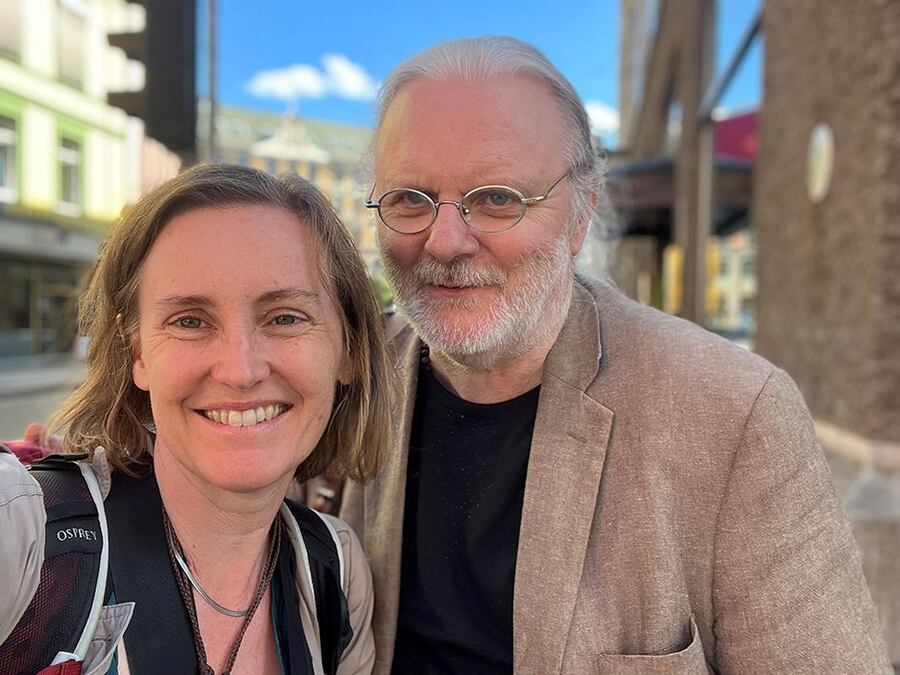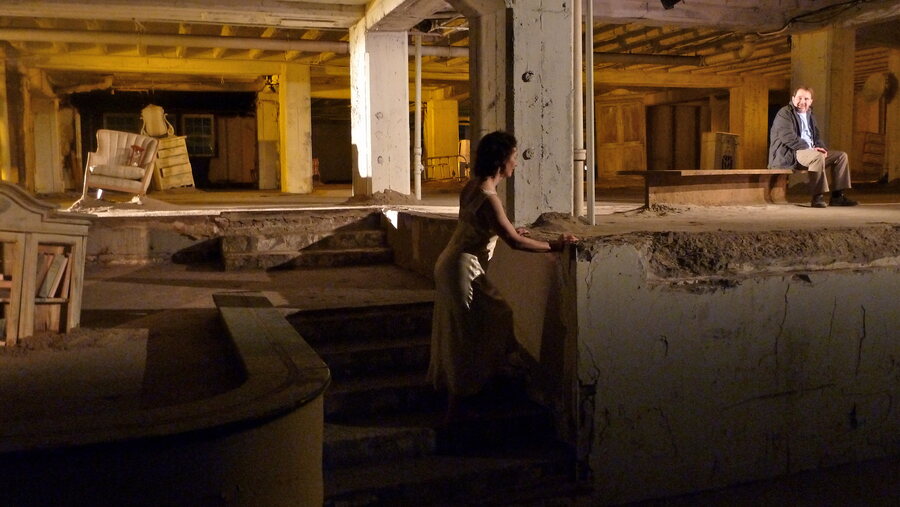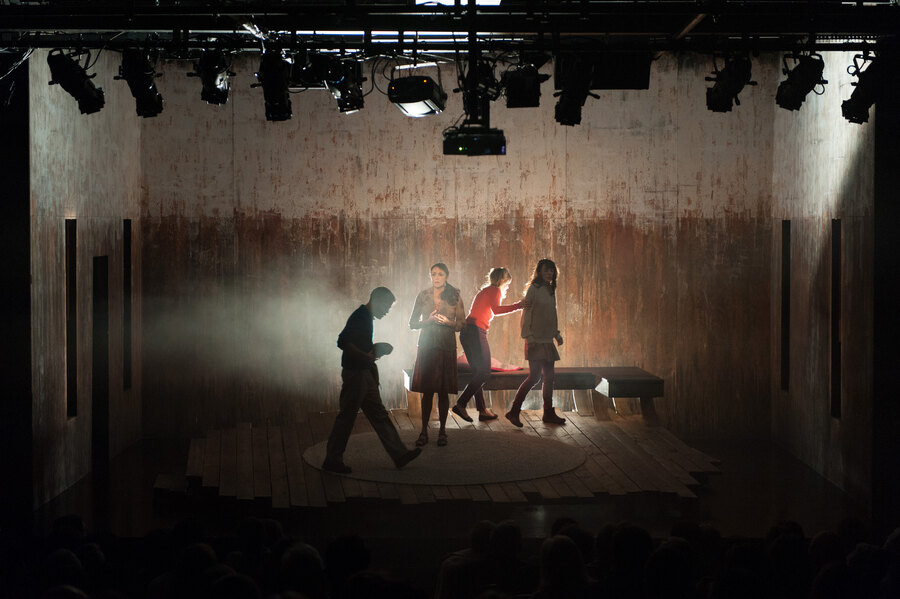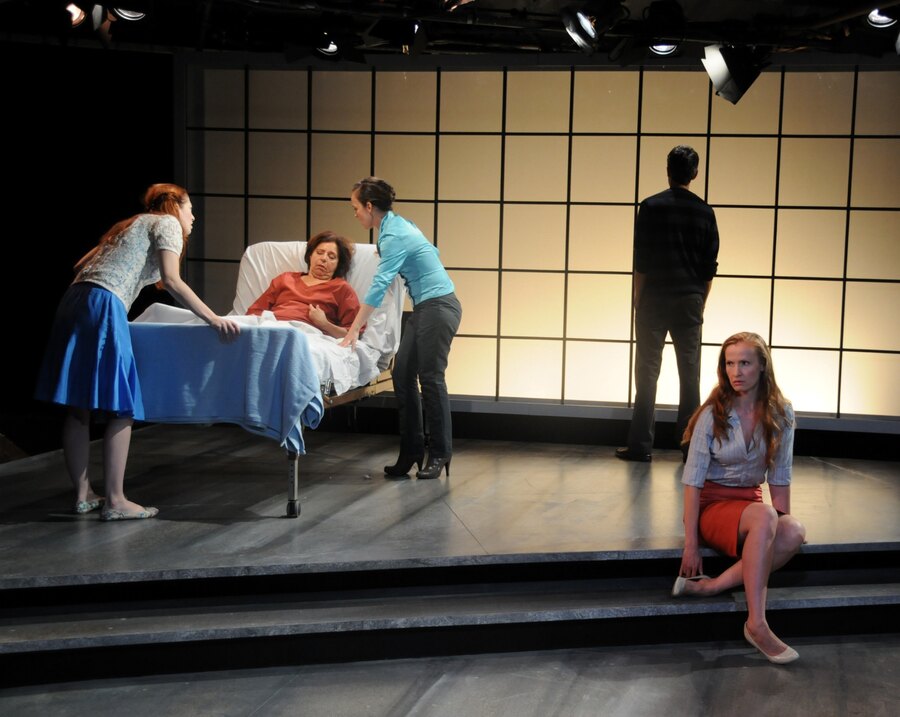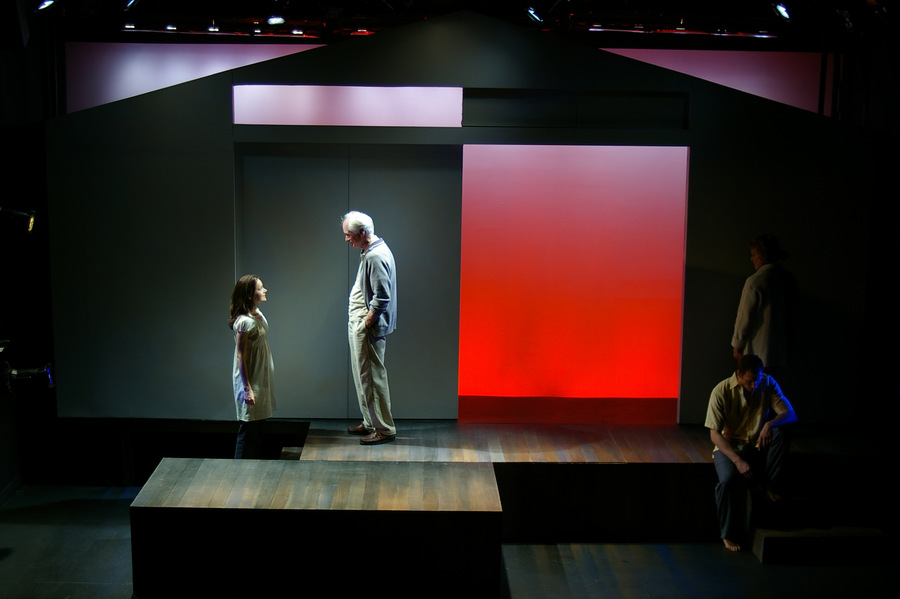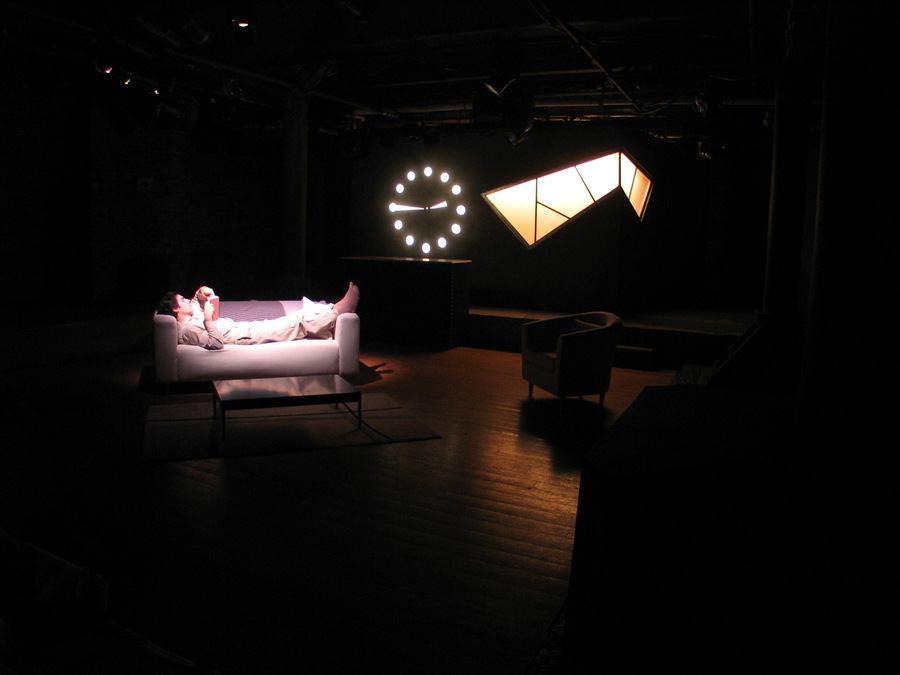On Dec. 10 the Swedish Academy will give Jon Fosse the Nobel Prize in Literature “for his innovative plays and prose which give voice to the unsayable.” From the Swedish Academy’s citation: “His immense oeuvre written in Norwegian Nynorsk and spanning a variety of genres consists of a wealth of plays, novels, poetry collections, essays, children’s books, and translations. While he is today one of the most widely performed playwrights in the world, he has also become increasingly recognized for his prose.”
American Sarah Cameron Sunde was 26 years old and visiting relatives in Oslo when they took her to the Torshovtheatret, which is part of the National Theatre, to see Vinter/Winter) by Jon Fosse.
“My family suggested I read the play ahead of time,” Sarah recalls. “I had worked as a theatre director in New York for three years and was reading lots of plays at that time. But the Vinter text did something new. I was captivated and moved, and felt a deep connection to the play with its sparse poetic language that contained suspense in every tiny twist and turn.”
That was in 2003. Now, 20 years later, Sunde has translated a total of six plays by Fosse. She directed five U.S. premiere productions: Natta syng sine songar/Night Sings Its Songs (2004), Dødsvariasjonar/Deathvariations (2006), Sa ka la (2008), Ein sommars dag/A Summer Day (2012), and Draum om hausten/Dream of Autumn (2013). She also translated Svevn/Sleep.
In 2004, when she mounted the debut of Fosse’s work in the U.S., Fosse traveled to New York for the
opening, and the production generated good reviews in The New York Times and other publications. The Times review praised both Fosse and Sunde as having “an ear for conversation, particularly for the synergy of repetition and for the fine line between generality and allegory…Ms. Sunde, who also directed, has made interesting choices for her cast of five, who are uniformly excellent.”
It was the first time Fosse received positive reviews for an English-language production. The good reviews continued with subsequent productions, as did Sunde’s close collaboration with Fosse.
In a video conversation from New York, Sunde says that she initially only intended to direct
Fosse’s plays. She read through the books of plays she had brought home from Norway. Her father is Norwegian, and when she was 12 years old she spent seven months living with Norwegian relatives and going to school in Drammen. She had learned enough Norwegian to be able to read Fosse.
“But how could I convince a theatre producer in New York who couldn’t read Norwegian?” she recalls wondering. “I went to the New York Public Library. The only English translation available at that time was the British translation of Natta syng sine songar. I understood that wasn’t going to work.”
Class Differences
She contacted Fosse and he sent two American-English translations, but one felt too literal and the other was too American, she explains.
“None of the three versions were doing what Fosse’s text does in Nynorsk (New Norwegian),” Sunde says. “So I decided to do my own translation. I wanted to be as true to his text as possible, and that meant I had to go directly to the source.”
It may not be widely known outside Norway that the country has two written languages, Bokmål and Nynorsk. Bokmål derives from Danish, influenced from the time Norway was under Danish rule, a period which ended in 1814 (in fact, Henrik Ibsen wrote in Dano-Norwegian, which later developed into Bokmål, though his plays are now often performed in contemporary translation). Nynorsk, a written language developed in the 1800s and based on Norwegian dialects, is considered a more poetical language. On Oct. 5, when the Nobel Prize was announced, Jon Fosse gave a special thanks to the Nynorsk language.
Sunde says that in the U.S. it is common to use British translations for European and other foreign
plays because theatres often lack funds to commission new translations, but this doesn’t always work from a cultural perspective. “The British title of Natta syng sine songar was Nightsongs,” she says, “but I knew that a more poetic title would be better for American theatre audiences. It had to be Night Sings Its Songs.
“Another example of the difference between the U.S. and the U.K. is the question of social class. ‘Du må berre setje deg ned’ in the British version was translated as ‘Do sit down,’ something that may work for the British public but not in the U.S., where no one would say this so formally. To our American ears, this would sound like you are talking to the Queen of England, or at least someone who is very rich, who has a higher status or upper class. We would say, ‘You can have a seat,’ and that was how I translated it. It was through this line that I understood how the wrong social class could be read into the characters. It’s important to start with the local culture as the point of departure for translations.”
It was also a challenge to figure out how to deal with such simple and commonly spoken words such as “ja” and “jo” that are repeated throughout Fosse’s text.
“The British texts simply eliminated these words, but I think the repetition of these ‘filler
words’ is crucial to understanding the play,” Sunde notes. “I worked to find the American equivalent and ended up with ‘yeh’ for ‘ja.'” Sunde worked with the actors to find the myriad of meanings in how this little word, “yeh,” was used.
“‘Jo’ had many meanings and different ways of being expressed. In my translations, I used typical American spoken words such as ‘like,’ ‘y’know,’ and ‘well.’ Small filler words that help the text live in the bodies of the actors and give clues to the complexity of what is happening.”
Sunde emphasizes that “in translating plays there are always things that are ‘untranslatable.’ That is the challenge. Plays are meant to be experienced live. One cannot simply translate text; one must translate the action that lies underneath the text. Action will always be cultural. So will subtleties and humor. Therefore, it is imperative to translate specifically for the culture that one is working in and to translate specifically for production.”
The Infinite
In her theatre community, together with Marie Miller, Sunde co-founded a “Translation Think Tank” to advocate for the artistic work that goes into translating theatrical texts, with an emphasis on teamwork and collaboration. There are two conditions that are absolutely fundamental in this process, according to the Translation Think Tank: At least one person on the team understands both cultures and can speak both languages, and at least one person understands theatrical language and the way actions function in a play. Sunde worked with the Norwegian dramaturg Oda Radoor on her translations. With the Norwegian actress, Anna Guttormsgaard, she co-founded the New York-based theatre company Oslo Elsewhere, active from 2003-2012, which was dedicated to translating and producing “Norwegian plays that translate.”
“The beauty and joy of translating Fosse is in his ability to use the simplest everyday language to convey vast existential ideas with room for many interpretations,” Sunde says. “For me, it is about working with the mystery and holding the tension. There is something I feel when I read Fosse in Nynorsk; it is so well crafted, and it’s difficult to translate. I always think of translation as moving toward infinity, because you can never get it exactly as the author intended, but you can get closer and closer and closer.”
Marianne Sunde (no relation to Sarah Cameron Sunde) is a freelance writer based in Norway. mariasu@online.no. This article first appeared in Dag og Tid, Norway’s National Nynorsk weekly newspaper, on Oct. 13; it has been translated and expanded for American Theatre.

